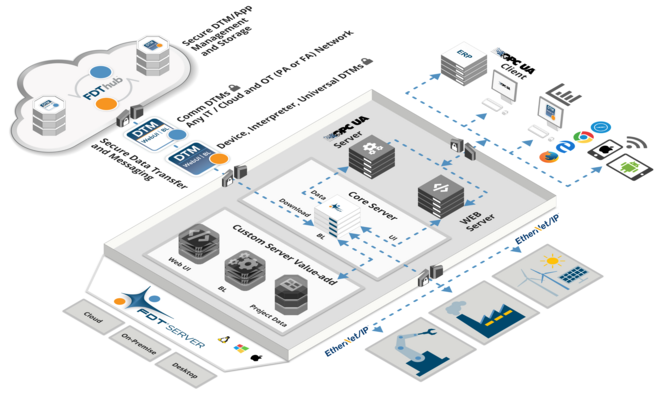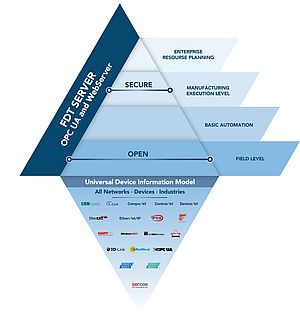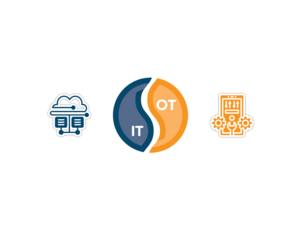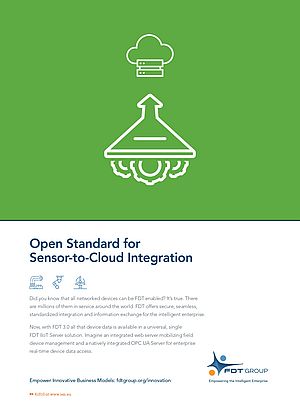FDT and ODVA have recently announced a partnership to further integrate FDT technology and EtherNet/IP™. In particular, joint ODVA and FDT Group activities aim to develop an FDT communications annex to support the ODVA Common Industrial Protocol (“CIP™”) on the new FDT 3.0/FITS platform. Glenn Schulz, Managing Director at FDT Group, gives us the details of this partnership
IEN Europe: What’s the objective of your partnership with ODVA?
G. Schulz: The FDT Group has had a long association of working closely with ODVA to support their networks on the FDT Standard. The most recent announcement is specific to supporting the ODVA CIP protocol on our new FITS / FDT 3.0 platform. This is done through a “communications annex”. ODVA will be supporting our efforts with direct participation on our protocol annex committee and will also help with the technical review of the proposed annex prior to publication.
IEN Europe: Why do you consider it important to integrate FDT technologies and EtherNet/IP?
G. Schulz: Ethernet/IP is a leading network in both the process and factory automation sectors. As a standards association, we are market driven in our efforts. The marketplace has clearly shown its desire for the new FITS platform to support the CIP family of standards and our goal is to make this available in 2020.
IEN Europe: What are the features of the new FDT 3.0/FITS platform?
G. Schulz: Skid to Cloud Deployment: The new FDT standard is completely platform independent in its development and deployment. The server environment can scale from a small, low cost Linux box running a remote OEM skid asset management environment up to a multi-facility, enterprise-wide, cloud-based installation. Any class of FDT server is securely accessible through any authenticated web browser or OPC UA client from anywhere in the world. For the vendor and services community, this scalability is achieved with one development environment that can deploy under a wide variety of operating systems and server classes.
A Robust Security Architecture: We started with a security analysis before the first line of the FITS specification was written and we have maintained a strong security posture throughout by utilizing a separate oversight committee staffed with security experts. Every point of access is protected with industry standard TLS authentication and encryption which can be further hardened through a customer specified VPN. Authentication of servers and clients is carried out through 509v3 certificates. User authorization follows our time tested FDT role-based security model. The security industry does not stand still and neither will we as we continue to bolster our FDT security posture.
Remote Access and Mobility: We started this update to the FDT standard with a broad industry survey to understand the emerging requirements for remote access and mobility - this has served as the centerpiece of our development activities. The new FDT standard fully enables authorized remote access from anywhere on the plant floor, within the enterprise or anywhere in the world - all with a standard web browser or OPC UA client on any authorized desktop, laptop, tablet, phone or IIoT device. The recent COVID-19 lock downs have truly underscored the value of this type of flexible, secure remote access.
IT/OT Integration: Many process industries and manufacturing plants have begun to realize the benefits of cross pollinating the information technology and operations technology departments. The new FDT standard further drives out these benefits by allowing deployment topologies that support incumbent architectural requirements of the enterprise. We further enhance the value of the FDT server through a fully integrated OPC UA server within the FDT server. The FDT server publishes a full data schema that can be directly browsed by any authorized OPC UA client anywhere in the enterprise. This architecture eliminates the need for the PLC or DCS to be the broker of all information between the plant floor and the enterprise business systems.
Compatibility: The FDT Standard has been deployed for decades as a single user, desktop environment resulting in the largest installed base of any asset management and device configuration tool or standard. In order to support and protect this installed base, the new FDT standard is deployable in this exact same configuration allowing legacy and new DTMs to be freely mixed in the same topology. While the older DTM architecture may preclude some of the leading-edge features of the new FDT standard, no existing functionality is lost.
IEN Europe: FDT and ODVA are working together to develop an FDT communications annex to support the ODVA Common Industrial Protocol (“CIP™”) on the new FDT 3.0/FITS platform. Which advantages would this enhancement bring to users?
G. Schulz: The existing FDT standards are already well accepted for the support of the CIP protocol family. By making CIP support available on the new FITS platform, Ethernet/IP et al users gain the advantages of platform independence, remote access, mobile device support, scalability from skid to cloud and even FDT as a service.
IEN Europe: Do you think that the present situation with Coronavirus with impact the industrial communication sector? How?
G. Schulz: The various standards organizations are already well accustomed to working via teleconference to accommodate global participation, so I don’t expect the standards to miss a beat. Time will tell if the return from Covid lock downs will be accretive or dilutive to the implementation of the standards. From an FDT Group perspective, our Board members from industry leading manufacturers have repeatedly expressed their enthusiasm for the timely release of the FITS standards. This bodes well for our industry.
IEN Europe: Which challenges do you envisage to tackle with ODVA in the future?
G. Schulz: ODVA has always been a market leader. Their recent CIP Security release is a model for the industry to follow. We are fortunate to have a good working relationship at all levels of our organizations so that we can continue to jointly advance the state of the art to the satisfaction or our common vendor and end user communities.
Sara Ibrahim






























